Reviews
Lars von Trier
Denmark / Germany / France / Sweden / Italy / Poland, 2009
Credits
Review by Leo Goldsmith
Posted on 02 October 2009
Source IFC Films 35mm print
Categories The 47th New York Film Festival
What to do with Lars von Trier? On the one hand, you have an obviously talented filmmaker; on the other, a merciless asshole. Show-off, shit-stirrer, misanthrope, naughty little boy: the epithets fairly roll off the tongue, as do the vows I’ve heard from more than a few friends recently that they will never again subject themselves to one of his films.
This is a shame, though—there is, after all, that talent. Few filmmakers could make gripping material from a very long film with chalk-marks on the floor instead of sets, and a pompously languorous running commentary from John Hurt. But von Trier did both - twice (almost) - not only definitively demonstrating his abilities as a director of actors, but also crafting an astonishing (and precisely, masterfully galling) story that operated on both the characters and the audience like nerve-wracking clockwork. I actually once made the contention that Manderlay was his best film, a statement I’ll probably regret if I ever get around to watching that film again. But I’ll uphold the reason for that sentiment: the von Trier that once relied so heavily on the unremitting and button-pushing torture of women - the von Trier of Breaking the Waves and Dancer in the Dark - is a much less interesting, far lazier filmmaker than the craftsman he has become.
That von Trier still scores points through misanthropy and (arguably) misogyny is the reason that many can’t help but spit on the floor at the mere mention of his name. The majority of his movies are about roughly the same thing - paving new roads to hell with good intentions - and Antichrist is no exception to this. In fact, it’s almost a parody of it, one that grafts this near-sociopathic worldview onto a cinematic genre where gleeful sadism is most entertaining: horror. In his other films, this conflict arises between big ideals and messy reality: the liberalism and good will of golden-hearted saviors (usually so-called strong women) dashing up against the rocks of the schemers, the manipulators, or even just the skeptical (usually men, and the weaker specimens of the weaker sex). Antichrist is no feminist film, but it nonetheless distinguishes itself in its subtle gender-reversal: here, the good intentions are those of an unnamed husband (played by Willem Dafoe), and the road to hell lies in the exploration of the tortured subconscious of his unnamed wife (played, with almost supernatural focus and emotional energy, by Charlotte Gainsbourg).
Reeling from the accidental death of their infant son - whose fall from a bedroom window von Trier intercuts with the couple’s passionate lovemaking (with penetration!) in a prologue as astonishing as any scene in the director’s career - the couple engage in a form of therapy to “work through” what the film identifies as their “pain, grief, and despair.” In fact, this unholy trinity is not so much theirs as hers. He is a therapist by trade, and she is a hysterical woman, so he makes one of those spectacularly bad decisions common to horror films: he takes charge of her catharsis through a series of exercises, role-playing games, and leading questions designed to burrow deep into the fears at the seat of her mourning. This we might see as also a form of therapy for him, of course: there is the sense that, in von Trier’s view, women tend to undergo a process of grief physically, through wailing and gnashing of teeth, and men intellectually, through a reordering and rationalization of the chaos they find in their world. This pervasive binary structure seems to set the masculine and feminine (he and she) against one another, along with the respective dichotomies of order and chaos, language and images, mind and body, and reason and nature.
From the start, though, we learn that the wife’s grief is characterized as “abnormal,” exhibited in her nameless terror, impulses toward self-annihilation, and fervid libido. Throughout, Gainsbourg sustains a tireless, wrenching, and deeply physical performance as the erratic woman at the film’s center, vulnerable and volatile, always wearing a haggard, disquietingly beautiful glare. Dafoe has the slightly onerous job of simply keeping watch, needling her with questions and exercises like an emotional taskmaster (or, indeed, a film director) towards emotional recesses that can only lead to some kind of psychic or physical brutality.
This is, after all, a von Trier film - but even more so, it is very much a horror film, denoted by its (somewhat misleading, even beside the point) title, but especially by the tension with which the film grips the viewer once the scene shifts from the couple’s bland, urban apartment to the wild, grey woods—lovely, dark, and deep. This shift is accompanied by a similar, subtler change in style, marked by an arresting sequence in which the couple rides by train into the forest, with amorphous faces of horror flashing out of the bending, blurry treescape that’s rushing past the window.
Moments like these show off von Trier’s abilities as a master of media-alchemy: the crisp pseudo-vérité filmmaking, so familiar or even cliché from the director’s Dogme days, gives way to a geyser of daring, but lovely digital animation. In a dream-vision, and under her husband’s therapeutic guidance, Gainsbourg floats across a woodland bridge in slow motion, sinking into the grass by the couple’s cabin. Later, when reality and hallucination begin to blur for both characters, the plasticity of the film’s setting, von Trier’s fully controlled mise-en-scene, leads the characters into a truly stunning, deeply upsetting universe of natural beauty and cruelty, where every animal is menacingly symbolic, every leaf and acorn an omen, and every undulation of the landscape a suggestion of the overpowering subterranean forces beneath it.
And it’s this totalizing gesture of von Trier, infusing the frame with grayness and uncertainty, that makes Antichrist not a smug and sterile exercise, but in fact a beautiful and ultimately very sad film. Although there is much to suggest that von Trier is once again up to his usual button-pushing tricks, orchestrating explicit references to Freud, disparaging portrayals of academic feminist studies, and a nauseatingly physical final act like a master puppeteer, the film increasingly gives itself over to chaos. Von Trier’s perverse, anal, and literary structuring jangles with the organic waywardness of the plot (and his heroine’s actions), and there is the sense that the director here is facing his own deepest fear: a lack of control, the loss of the iron grip for which he is famous. Similarly, as Dafoe’s pompous, know-it-all husband loses his grasp of the mercurial emotional swells of his patient-wife, we see just how different a von Trier film this is.
Of course, in many ways, many of von Trier’s orderly, tightly controlled films have butted up against this point at which, as the fox says, “Chaos reigns.” Grace’s avenging angel act at the conclusion of Dogville indeed demonstrated von Trier’s ability to at once remain in control and also to give over a certain amount of narrative agency (however morally equivocal) to his heroine. After all, the big influence here, as always, is Carl Theodor Dreyer, that other tyrannical Dane whose tuxedo von Trier once wore to the Cannes Film Festival.1 Nearly all of Dreyer’s films from The Passion of Joan of Arc onwards involve the disjunction between men and women played out - sometimes violently - as a struggle of reason against nature, mind against body, language and intellectual order against gesture and emotional chaos. (Dreyer’s Day of Wrath might well be Gainsbourg’s character’s favorite film of all time, as it concerns her thesis topic, the persecution of women as witches in 16th century Europe.) What made Dreyer’s films gripping was his own high-wire act between these polarities - the rigorous forces of male patriarchy (embodied even in the director’s own control of mise-en-scene) and the unpredictable impulses of the set-upon female protagonist (embodied in the performance of actresses like Maria Falconetti, Lisbeth Movin, and Nina Pens Rode).
This is the closest von Trier has come to his master’s balance of these (albeit somewhat dated) gender dichotomies, and the well-publicized circumstances of the making of this film likely have something to do with it—von Trier was undergoing a deep depression prior to and throughout the production, a condition which apparently still persists. This, for all the talk of man versus woman, suggests that a film that is not so much misanthropic or misogynist, but mis-everything: von Trier sees the conditions of living as cruel and unsustainable, a world in which everyone is both victim and aggressor. But as grim as this is, for once we have a von Trier film in which we are not simply waiting for the axe to fall on us. This is a war in which the stakes are as high for the director as they are for us. It’s a sad and brutal war not between von Trier and his audience but between the director and his own imagination.
- There are other influences, too: Kubrick’s The Shining, Bergman’s Hour of the Wolf and Scenes from a Marriage, and even Tarkovksy, to whom von Trier dedicated his film, for seemingly no other reason than its frequent switches from black-and-white to color. ↩
More The 47th New York Film Festival
-

Sweetgrass
2009 -
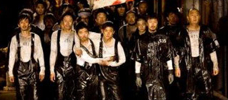
Kanikosen
2009 -

Police, Adjective
2009 -
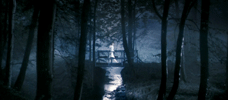
Antichrist
2009 -
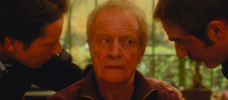
Wild Grass
2009 -

Lebanon
2009 -
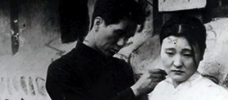
Crossroads of Youth
1934 -
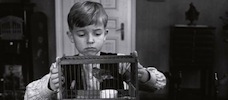
The White Ribbon
2009 -

Mother
2009 -

Min Ye
2009 -
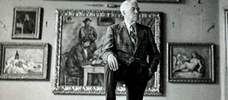
The Art of the Steal
2009 -

In Comparison
2009
We don’t do comments anymore, but you may contact us here or find us on Twitter or Facebook.



